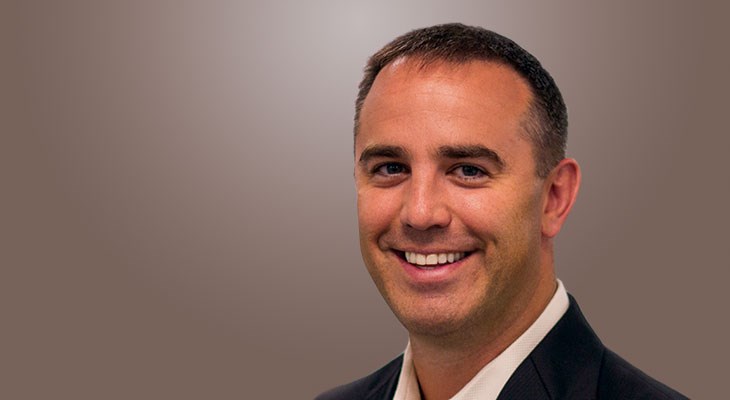Park Place Technologies’ recent deal to buy Entuity opens up another silo of dealmaking opportunities for the acquisitive company, President and CEO Chris Adams says.
“To this point, we have focused on maintenance acquisitions,” Adams says. “Whatever the number of companies there are to go buy in that space, it's a finite number. We were only in that space.”
Now, Park Place is pursuing software and managed service companies, which outsource operating system support or network support.
“That creates a whole new pipeline of potential targets for us,” Adams says. “So this is really the first step for us to leverage our existing M&A strengths in new markets or for us, new product opportunities.”
Entuity is a global network performance monitoring software company with offices in Boston and London. It marked Park Place’s 12th acquisition since 2016 and second in 2019, following the acquisition of UK-based MCSA Group Limited in April.
“Acquisition and integration is a key component of our strategy,” Adams says. “We've got a good system and we've been very successful, so I can't see us changing that.”
Smart Business Dealmakers spoke with Adams about the role due diligence played in the Entuity deal and a lesson Adams took from Microsoft’s $26.2 billion deal to buy LinkedIn.
Context is critical
Every deal presents a unique challenge and the Entuity acquisition was no different, Adams says.
The company had a difficult ownership structure in which the owner was “kind of like a publicly traded private equity.”
Over the years, Entuity placed equity into different vehicles and owners, Adams explains. “By the time we got to our closing, they were having a real hard time figuring out exactly who owned what.”
That ended up forcing an unusual two-stage close. “We did a sign with a two or three-week period for them to get all their signatures before close,” he says.
It wasn’t a problem that ever threatened the deal from happening. But it does speak to the importance of conducting a thorough round of due diligence in any transaction opportunity.
“When you're looking at a deal and you have to make a decision, you don't want to get hung up on all the nonsense and attributes that aren't important,” Adams says. “Is it good for our business? If the answer is yes, then what is the risk? The risk here is if you close without having all the proper transfer of equity, then at some point down the line, you could have a claim. A minor claim, but a claim. You don't want someone showing up three years later that says, ‘I own .01% of that company,’ and it's now worth 10 times what you paid for it.”
The key is to have good advisers who can uncover these kinds of situations and provide useful counsel on how to proceed.
“The really good ones help you know everything you need to know and put it in context,” Adams says. “Context is important. Legally, it's tough for an attorney to give advice. Yeah, you should do this or no, you shouldn't. They really struggle with that because it's a legal question and sometimes they won't put context around it. When we are negotiating with firms that don't have a lot of M&A experience, deals can often get a lot longer because they don't know what they should and shouldn't negotiate.”
What’s around the next corner?
As Park Place moves forward in search of additional acquisition opportunities, and potential new silos, Adams says he often thinks about the Fortune 500.
“If you just look at the Fortune 500 every 20 years, it significantly rotates and I think the companies that rotate off didn't adapt,” Adams says. “They didn't really see, whether it was technology or economy or buyers, the trends that were changing.”
While technology drives a tremendous amount of industry change, it’s not the only variable in business.
“There were restaurants that flourished in the '70s, taking prepackaged solutions out to their restaurants and changing the menus so they were getting maybe more seafood or whatever,” Adams says. “Now people want fresh and healthy. So if you didn't adapt from that to the new techniques, you may be having trouble on your top line. A lot of the chains that adapted and maybe acquired outside of their space, adding fresh food options to their portfolio, they should be in a better position. Technology changes in business constantly. But there are other reasons that businesses need to change too.”
Adams points to Microsoft’s purchase of LinkedIn as a working example of this approach to M&A strategy.
“I don't think anybody realized why Satya Nadella was buying LinkedIn at the time,” Adams says. “They thought it was a stretch. Well, I know now because we're a customer. We use Microsoft CRM and he's integrating LinkedIn, a network of business professionals that share all their personal information relative to their careers with the network. That's extremely valuable information. And that's why he acquired it. At the time, I was thinking, ‘Why is he interested in the subscription business?’ I didn't realize that he saw around the corner and realized there's a lot of value in that data to his customers. He's going to exploit it and he's doing that now.”
Related story:Chris Adams: How To Create A Great M&A Team




